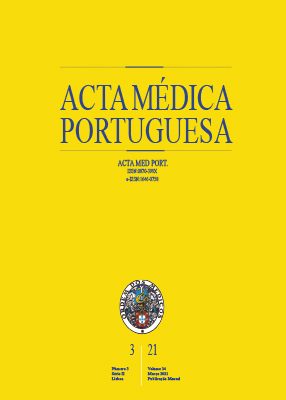Operationalisation for Portugal of the EU(7)-PIM List for Identification of Potentially Inappropriate Medicines in Older Adults
DOI:
https://doi.org/10.20344/amp.13618Keywords:
Aged, Inappropriate Prescribing, Portugal, Potentially Inappropriate Medication ListAbstract
Introduction: In 2015, the EU(7)-PIM List was published, which identifies potentially inappropriate medicines in older patients and resulted from a consensus of experts from seven European countries. Portugal was not part of this group, so it was not originally adapted to the Portuguese reality. With this work, we intend to elaborate a list of potentially inappropriate medicines adapted to the reality of medicines marketed in Portugal, through the operationalization of the EU(7)-PIM List for the national reality and to evaluate the adequacy of its use for clinical practice.
Material and Methods: Search, in INFARMED’s Infomed database, of drugs that are included in the EU(7)-PIM List that have marketing authorization, and analysis of possible new drugs for inclusion in the list. The tool adapted to the Portuguese reality was applied to a sample of 1089 outpatient, polymedicated older patients from 38 primary care units in Central Portugal.
Results: The final PIM list adapted to the Portuguese reality includes 184 potentially inappropriate medicines (from these, 178 are active substances, five are classes of drugs, and one corresponds to the sliding scale therapeutic scheme used in insulin therapy). Of 1089 polymedicated older patients, 83.7% took at least one drug included in the final potentially inappropriate medicines list or belonging to one of the groups included in the list, and, on average, each patient took 1.74 (IQR 1 – 2).
Discussion: Even though the availability of drugs on the market is quite diverse, the EU(7)-PIM List has been used in several European countries. With this study, we operationalized the European list for the Portuguese reality, which will enable its application in clinical practice.
Conclusion: The list drawn up is a useful tool for the identification of potentially inappropriate medicines, easy to use in clinical practice and research.
Downloads
Downloads
Published
How to Cite
Issue
Section
License
All the articles published in the AMP are open access and comply with the requirements of funding agencies or academic institutions. The AMP is governed by the terms of the Creative Commons ‘Attribution – Non-Commercial Use - (CC-BY-NC)’ license, regarding the use by third parties.
It is the author’s responsibility to obtain approval for the reproduction of figures, tables, etc. from other publications.
Upon acceptance of an article for publication, the authors will be asked to complete the ICMJE “Copyright Liability and Copyright Sharing Statement “(http://www.actamedicaportuguesa.com/info/AMP-NormasPublicacao.pdf) and the “Declaration of Potential Conflicts of Interest” (http:// www.icmje.org/conflicts-of-interest). An e-mail will be sent to the corresponding author to acknowledge receipt of the manuscript.
After publication, the authors are authorised to make their articles available in repositories of their institutions of origin, as long as they always mention where they were published and according to the Creative Commons license.









